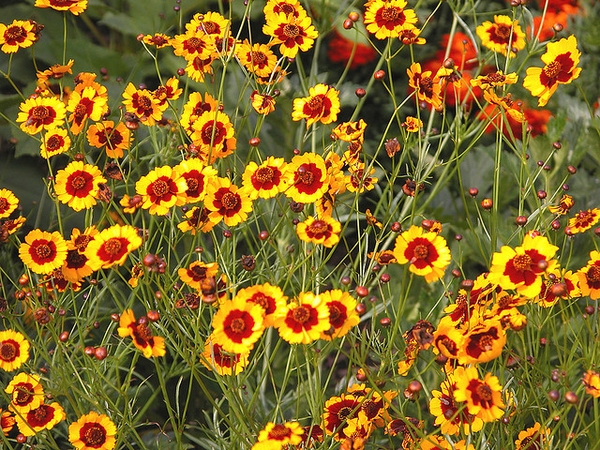June Gardening Tips
go.ncsu.edu/readext?798774
en Español / em Português
El inglés es el idioma de control de esta página. En la medida en que haya algún conflicto entre la traducción al inglés y la traducción, el inglés prevalece.
Al hacer clic en el enlace de traducción se activa un servicio de traducción gratuito para convertir la página al español. Al igual que con cualquier traducción por Internet, la conversión no es sensible al contexto y puede que no traduzca el texto en su significado original. NC State Extension no garantiza la exactitud del texto traducido. Por favor, tenga en cuenta que algunas aplicaciones y/o servicios pueden no funcionar como se espera cuando se traducen.
Português
Inglês é o idioma de controle desta página. Na medida que haja algum conflito entre o texto original em Inglês e a tradução, o Inglês prevalece.
Ao clicar no link de tradução, um serviço gratuito de tradução será ativado para converter a página para o Português. Como em qualquer tradução pela internet, a conversão não é sensivel ao contexto e pode não ocorrer a tradução para o significado orginal. O serviço de Extensão da Carolina do Norte (NC State Extension) não garante a exatidão do texto traduzido. Por favor, observe que algumas funções ou serviços podem não funcionar como esperado após a tradução.
English
English is the controlling language of this page. To the extent there is any conflict between the English text and the translation, English controls.
Clicking on the translation link activates a free translation service to convert the page to Spanish. As with any Internet translation, the conversion is not context-sensitive and may not translate the text to its original meaning. NC State Extension does not guarantee the accuracy of the translated text. Please note that some applications and/or services may not function as expected when translated.
Collapse ▲As we welcome in summer, our gardens are now in full swing. With summer weather we have to keep our gardens watered regularly and be on the outlook for insect and disease problems. Below are gardening tips to help your garden grow through the month of June.
Lawn
- Mowing at the correct height and frequency is one of the most important things you can do keep your lawn thick and weed free. Different turf types have different ideal mowing heights. Centipede, bermuda and zoysia lawns are best kept at 1″ to 1 1/2″. St. Augustine lawns need to mowed at 3″ to 4″ high.
- If you use any broadleaf weed killer containing 2-4-D, buy two sprayers and use one for herbicides and the other for insecticides and fertilizers. Label the sprayers with permanent markers so the use is obvious to prevent accidently spraying a herbicide on wanted plants.
- Seeds of centipede, bermuda, and certain varieties of zoysia can be sown in June but need frequent watering to germinate. Do not allow grass seed to dry out after being sown. St. Augustine grass cannot be established by seed.
Trees, Shrubs and Flowers
- For container gardens in shady locations, try shade loving plants like begonias, caladiums, ferns, coleus, fuchsia, hellebores, heuchera, and impatiens.
- Mid- to late June is an excellent time to take softwood cuttings of shrubs to start new plants. Some shrubs propagated in this manner are spirea, boxwood and azalea.
- Remove dead flowers from bedding plants to get more flowering. Removing the dead flowers or “deadheading” prevents the plants from not flowering and going to seed and before summer is over.
Fruit, Vegetables and Herbs
- Plant sweet potato slips in June for fall harvest.
- Most vegetables require 1″ of water per week. Avoid wetting the foliage of plants when watering as this increases disease problems. Use soaker hoses or drip tape to apply water at ground level.
- Remember to fertilize your tomatoes as they are growing. Fertilize with 2-3 tablespoons per plant after plant has started to set fruit and 4-6 weeks thereafter throughout the growing season. Use 8-8-8 and 10-10-10. Keep fertilizer 4-6″ from the plant’s stem to avoid fertilizer burn.
- Squash vine borers may cause a squash plant here and there to wilt, even when no other plants are suffering. Check near the base of the plant for a small hole and a mass of greenish-yellow excrement. Slitting open the stem may reveal the villain: a fat, white caterpillar. It may be possible to save the plant by removing the caterpillar, then covering the injured vine with moist soil to encourage rooting.
Jessica Strickland is an agriculture extension agent, specializing in horticulture for North Carolina Cooperative Extension in Wayne County.
Learn More!
- Sign up for the Wayne County Extension Gardening email list to receive timely gardening tips.
- Follow us on Facebook and Instagram.
- Visit the North Carolina Extension Gardener Plant Toolbox to discover more plant ideas for your garden.





